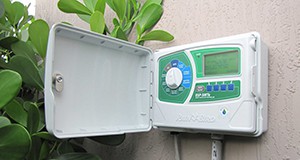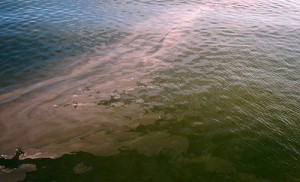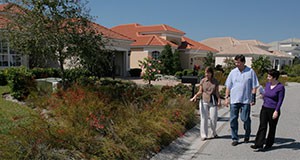
This 4-page fact sheet is the seventh publication in a series focusing on encouraging water conservation among Florida residents who use irrigation in their home landscapes. Extension educators create programs to encourage good irrigation practices and water conservation activities based on personal and social normative beliefs. To help in this goal, the authors examine personal and social norms of Florida residents who use irrigation in the home landscape and describe how Extension educators can capitalize on these positive norms to motivate Floridians to learn and use best water conservation practices. Written by Anil Kumar Chaudhary, Laura A. Warner, Alexa Lamm, Joy N. Rumble, and Randal Cantrell and published by the Agricultural Education and Communication Department.
http://edis.ifas.ufl.edu/wc205
Author: Susan Gildersleeve
Biology of the Hicatee: A Critically Endangered River Turtle of Belize
The hicatee (Dermatemys mawii) is a Central American river turtle and one of the 25 most endangered turtle species in the world. Over-hunting for meat, eggs, and shells is driving the turtles toward extinction. This 3-page fact sheet about the hicatee includes its natural history, reproductive habits, and ecology and describes the international conservation efforts to save the fascinating but fast-disappearing turtle. Written by Venetia Briggs-Gonzalez, Nathan Schwartz, Rebecca G. Harvey, and Frank J. Mazzotti and published in November 2015 by the Wildlife Ecology and Conservation Department.
http://edis.ifas.ufl.edu/uw404
Frequently Asked Questions about Soil Moisture Sensor Irrigation Controllers (SMS)
![]()
A soil moisture sensor (SMS) is a device that detects how much moisture is in the soil and prevents an irrigation system from running when it is not needed. This 4-page fact sheet written by Paul Monaghan, Ondine Wells, Michael Dukes, Maria Morera, and Laura Warner and published by the Department of Agricultural Education and Communications explains how the technology functions as well as how to install, program, operate, and maintain an SMS for a money- and water-wise sustainable home landscape that’s lush and beautiful.
http://edis.ifas.ufl.edu/wc238
Frequently Asked Questions about Evapotranspiration (ET) Irrigation Controllers
Evapotranspiration is the amount of water that is released into the atmosphere through evaporation and plant transpiration. An evapotranspiration irrigation controller is a device that uses data about the landscape, the type of irrigation system, and local weather conditions to determine when and how much to irrigate. This 5-page fact sheet written by Paul Monaghan, Ondine Wells, Michael Dukes, Maria Morera, and Laura Warner and published by the Department of Agricultural Education and Communications explains how the technology functions as well as how to install, program, operate, and maintain an ET controller for a money- and water-wise sustainable home landscape that’s lush and beautiful.
http://edis.ifas.ufl.edu/wc237
Eggcellent Adventures in Classroom Embryology
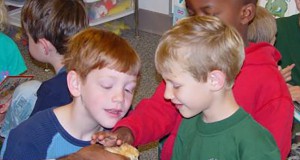
Eggcellent Adventures in Classroom Embryology is about learning through experience. In most cases, when a teacher signs up to teach chicken embryology in the classroom, the teacher sets up the incubator and the teacher and class wait for the eggs to hatch. That is the experience. But the daily plan of lessons in this guide make the chicken embryology experience an intracurricular experience. Through a series of activities, students can see firsthand how a chicken develops in an egg. Students will candle eggs to observe chick development, record data, make predictions, and conclude what they think the final outcome will be. The lessons in the guide follow Florida Sunshine State Standards and each contains an experience, instructions, background information, and reflection questions. The 31 lessons address math, language arts, and visual arts in addition to agricultural literacy and science concepts. Written by Shaina Bennett and Judy Levings and published by the 4-H Youth Development Program, October 2015.
http://edis.ifas.ufl.edu/4h368
Guidelines for Purchasing and Using Commercial Natural Enemies and Biopesticides in North America

This guide provides assistance in selecting, purchasing, and using commercially available natural enemies and biopesticides for managing pest problems. The guide assists in the identification of pests by habitat and lists types of natural enemies (parasitic nematodes, predatory mites, predatory insects, and parasitic wasps) and biopesticides available to manage these pests. Scientific and product names are provided both for insect and mite natural enemies and for some of the most common microbial insecticides, nematicides, and fungicides that can be used to manage pests. Biological control companies are listed along with their websites, and the guide provides additional sources of information on obtaining and using commercial natural enemies. Written by Lynn M. LeBeck and Norman C. Leppla, and published by the UF Department of Entomology and Nematology, October 2015.
http://edis.ifas.ufl.edu/in849
Maximizing Weed Control in Florida Citrus
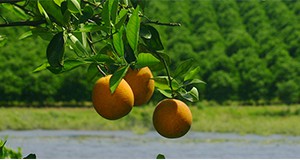
With Florida citrus growers and production managers being “squeezed” between rising production prices and declining yields from citrus greening, there’s more call than ever to reduce citrus production costs. Controlling weeds is a major expense, amounting to 11% of the total $2,278 annual production cost per acre for the 2014–2015 season. This 3-page fact sheet teaches the six essential components of an effective weed-management program to help maintain the profitability of this vital Florida industry. Written by Stephen H. Futch and Brent Sellers and published by the Horticultural Sciences Department. http://edis.ifas.ufl.edu/hs237
Pillbug, Roly-Poly, Woodlouse Armadillidium vulgare (Latreille) (Malacostraca: Isopoda: Armadillidiidae)
 The roly poly is an isopod, a type of non-insect arthropod also known as a terrestrial crustacean. It is called a roly-poly because it rolls into ball when disturbed. This defensive behavior also makes it look like a pill, which is why it is sometimes called a pillbug. In Europe, the name woodlouse is used for both roly polies and sowbugs because these arthropods are frequently found under logs. Roly polies are nocturnal, though they may be found during the day in the soil or under debris. They are beneficial in the garden or landscape. This 3-page fact sheet about the humble roly poly was written by Julie A. Franklin, Morgan A. Byron, and Jennifer Gillett-Kaufman and published by the UF Department of Entomology and Nematology, August 2015. (Photo by James Castner, University of Florida)
The roly poly is an isopod, a type of non-insect arthropod also known as a terrestrial crustacean. It is called a roly-poly because it rolls into ball when disturbed. This defensive behavior also makes it look like a pill, which is why it is sometimes called a pillbug. In Europe, the name woodlouse is used for both roly polies and sowbugs because these arthropods are frequently found under logs. Roly polies are nocturnal, though they may be found during the day in the soil or under debris. They are beneficial in the garden or landscape. This 3-page fact sheet about the humble roly poly was written by Julie A. Franklin, Morgan A. Byron, and Jennifer Gillett-Kaufman and published by the UF Department of Entomology and Nematology, August 2015. (Photo by James Castner, University of Florida)
http://edis.ifas.ufl.edu/in1099
Blue Morpho Butterfly Morpho peleides Kollar
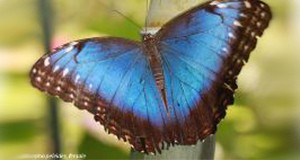
The blue morpho butterfly, also known as the peleides blue morpho or common blue morpho, is a brightly colored butterfly abundant in tropical environments in Central and South America. It can be seen flying in open areas such as paths, trails, forest edges, and rivers. In the United States, it is often featured in museums and zoos that have butterfly houses or butterfly rainforests. This five-page fact sheet about the popular butterfly was written by Haleigh A. Ray and Jacqueline Y. Miller and published by the UF Department of Entomology and Nematology, September 2015. (Photo credit: Andrei Sourakov, McGuire Center or Lepidoptera and Biodiversity, Florida Museum of Natural History, University of Florida)
http://edis.ifas.ufl.edu/in1101
Eight Steps to Developing a Simple Marketing Plan

Marketing is an essential component of any business, including agriculture. Despite the important role of marketing, many smallholding operators/growers are reluctant to create a marketing plan. This 5-page fact sheet provides a rationale for developing a marketing plan, a step-by-step process for creating one, and a marketing plan worksheet. Written by Edward A. Evans and Fredy H. Ballen, and published by the UF Department of Food and Resource Economics, August 2015. (Photo credit: iStock/Thinkstock)
http://edis.ifas.ufl.edu/fe967
Weed Management in Sesame
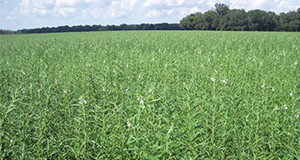 Sesame is a promising new crop for Florida, but few herbicides have been registered for it as yet. This 2-page fact sheet provides weed-control strategies for sesame. Written by Jason Ferrell and Ramon Leon, and published by the UF Department of Agronomy, June 2015. (Photo credit: Doug Mayo)
Sesame is a promising new crop for Florida, but few herbicides have been registered for it as yet. This 2-page fact sheet provides weed-control strategies for sesame. Written by Jason Ferrell and Ramon Leon, and published by the UF Department of Agronomy, June 2015. (Photo credit: Doug Mayo)
http://edis.ifas.ufl.edu/ag396
Climate Change and the Occurrence of Harmful Microorganisms in Florida’s Ocean and Coastal Waters
Climate change is expected to result in increased temperatures of nearshore ocean water, and this could lead to increased growth of harmful microorganisms. These include algae that form noxious or toxic blooms, including red tides, and bacteria and other pathogens. This situation could have negative consequences in regard to human health and also Florida’s ocean-related economy. A 6-page fact sheet written by Karl Havens, and published by the UF Department of Sea Grant, June 2015.
http://edis.ifas.ufl.edu/sg136

